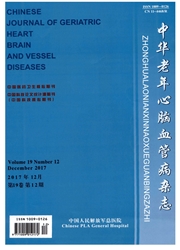

 中文摘要:
中文摘要:
目的探讨缺血再灌注损伤对SD乳鼠器官型脑片中神经再生的影响。方法制备P3SD乳鼠的全脑器官型脑片,随机分为缺血再灌注组和正常对照组,观察脑片生长情况,培养3天后,两组再分别分为2个亚组,分别给予药物和空白干预,依次列为Ⅰ组、Ⅱ组、Ⅲ组和Ⅳ组,通过倒置显微镜及免疫荧光染色观察各组脑片在1、3、7天的改变。结果缺血再灌注组宣下区、海马齿状回可见巢蛋白阳性新生细胞,而正常对照组未见新生细胞;药物干预后,两组均出现大量新生细胞,但正常对照组单位区域新生细胞数量多于缺血再灌注组(P〈0.01);Ⅲ组较Ⅰ、Ⅱ组明显增多(P〈0.01),随着培养时间延长,两组新生细胞均向外迁移,上述区域新生细胞密度逐渐减少。结论缺血再灌注损伤可以促进SD乳鼠器官型脑片神经再生,但同时也损伤了神经再生的潜能。
 英文摘要:
英文摘要:
Objective To investigate the effects of ischemia-reperfusion injury on nerve regeneration of the organotypic brain slices from neonatal SD rats. Methods Brain slices (300 μm) from postnatal 3^rd day (P3) SD rats were prepared and randomly divided into two groups: ischemiareperfusion group and control group. Each group was cultured in the same condition and received the same treatment. After that, changes were observed under invert microscope or detected by immunofluorescence staining. Resultss Nestin-positive neonatal cells were found in the subventrical zone and hippocampal dentate gyrus after brain slices endured ischemia-reperfusion injury, while there were no neonatal cells in the same area of control group. The number of neonatal cells increased greatly after brain slices of both groups received treatment, and the brain slices of control group had more neonatal cells (P 〈0.01). The density of neonatal cells in the subventrical zone and hippocampal dentate gyrus decreased due to cell migration as time went on. Conclusion Ischemia-reperfusion injury could induce nerve regeneration of the organotypic brain slices from neonatal SD rats, but it also could damage long-term nerve regeneration at the same time.
 同期刊论文项目
同期刊论文项目
 同项目期刊论文
同项目期刊论文
 期刊信息
期刊信息
